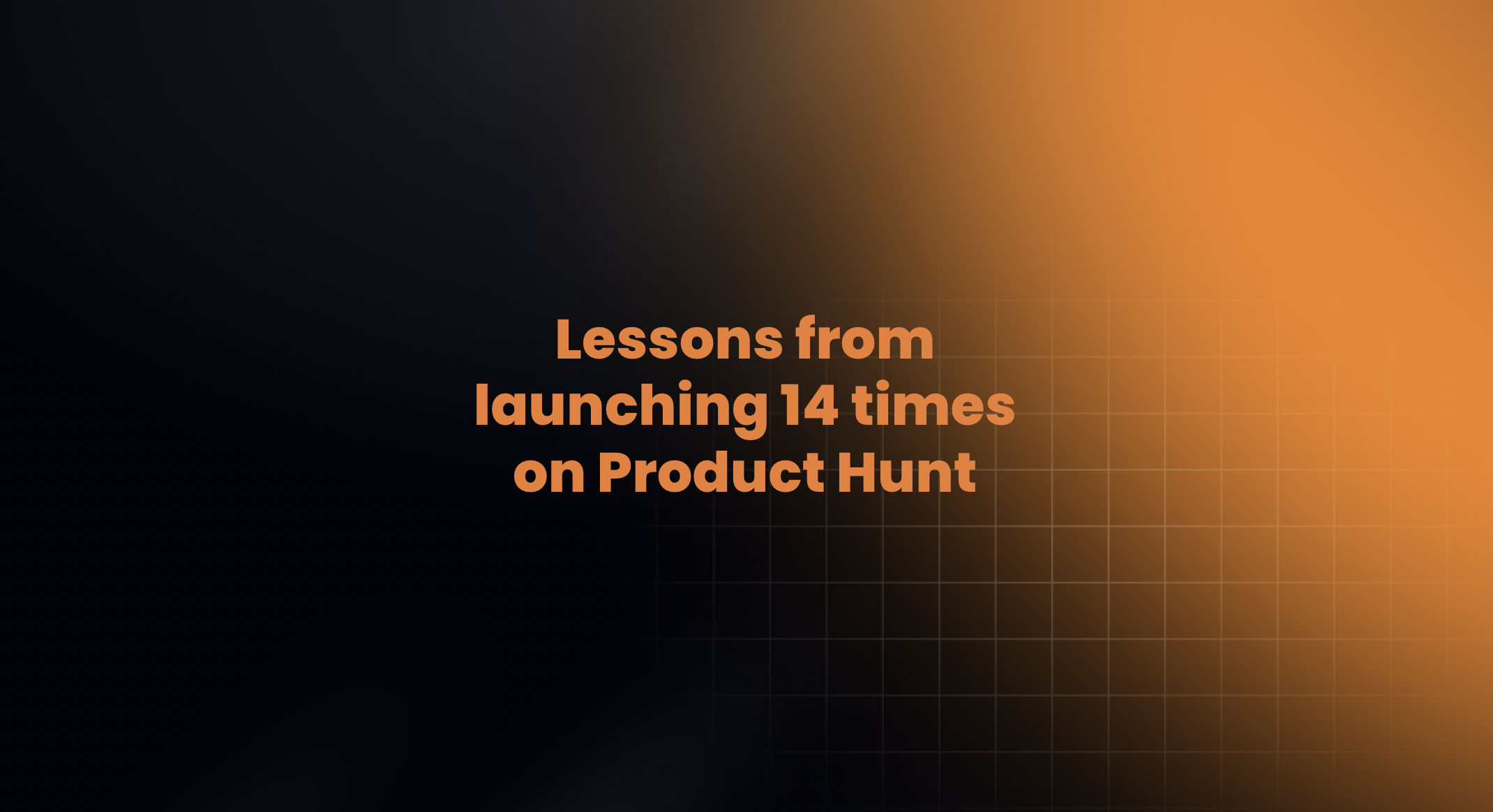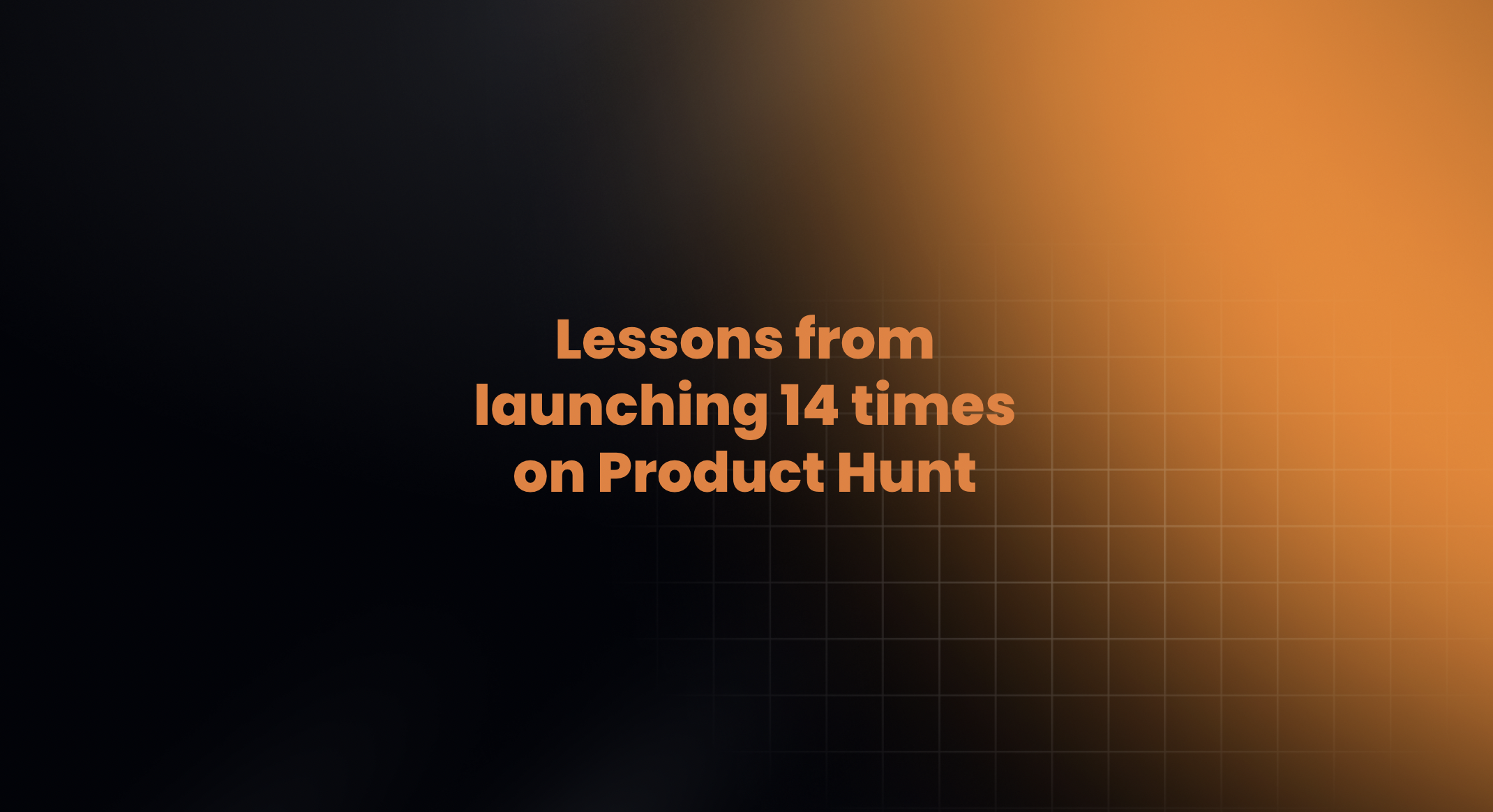Lessons from launching our devtool 14 times on product hunt

We wanted to document learnings from launching our devtool (and multiple acquisition products) over 14 times on Product Hunt, and that is what this article seeks to do. We have learned a ton in that period (May 2022 - Jan 2024) and also pivoted 4 times in the process.
This article outlines the rationale behind the launches, the channels we used to ensure we reached a relevant audience and the results and learnings of launching

Acquisition Products: the aim
Aside from actually launching Digger itself, we launched a bunch of acquisition products. The tools are listed below, you can also have a look at them on PH.
- Terrabook
- Costguard
- Botdeploy
- Notability
- Movicorn
- One Click AWS
- Stackbricks
- Opsflow
- Terragen
- AWS bootstap
- AWSify
- Flywheel
- And, ofcourse Digger v1,v2,v3 and v4.
The goal of launching these acquisition products was to ensure that we had clarity on the features that we wanted to ship and a “zoomed-in” perspective on what people thought about each feature. Each time we launched on Product Hunt, we got insight from Terraform users on what they thought of what we had launched. This is what expedited and aided us in the 4 pivots that we had at Digger before we zeroed in on the current iteration (An Open Source Terraform Automation and Collaboration tool)
How would relevant people get to know?
Unfortunately for devtools, the audience that hangs out on Product Hunt has steadily been moving further away from the core “hacker” audience. However, while this is an undeniable truth about launching devtools on PH, what we observed is that launching on PH also gives us a chance to tell relevant audience on other networks that we have shipped something new. For us, this was Hacker News, Personal LinkedIn accounts of founders and Twitter. Critique, feedback and insight that people share there is directly related to the launch but not necessarily on Product Hunt. This helps a lot in understanding if what you have launched is something that people really need.
Results & Learnings
The launches helped us a ton in learning what works/what doesn’t. The most relevant ones are around:
Timing and Frequency of launches
We figured that the ideal frequency for launching acquisition products was basically as often as possible. This however, involved a redesign and rethinking of the landing page and user onboarding, as these closely launched acquisition products had to be materially different from each other. For the core product launch of Digger, however, Product Hunt doesn’t let people launch the same thing for upto 6 months after they launch the last iteration, so that is the frequency that we aimed for.
Analytics and Metrics
This is something we weren’t great at initially, but slowly got better after each launch. Launching multiple times anywhere acts as a forcing function to have end to end analytics in place to understand where users are coming from, how many of them are converting and where the most amount of drop-off is happening. We still aren’t great at this though, and there is a lot of room for improvement.

Narrowing down of product scope
The journey from a “UI for AWS” to a “Terraform Framework” to eventually becoming an “Orchestrator for Terraform that plugs into your CI/CD system”, we iterated and scoped down a lot of stuff, and most of it was done as a result of feedback received after these launches. So simply put, PH helped us move from doing multiple things moderately well to (still trying) doing one thing as well as possible. (Terraform automation & collaboration)

Going open source & enabling self hosting
Initial iterations of Digger were not open source, but the latest iteration is. Since launching in Feb 2023, we have around 2.5 GitHub stars and a growing number of organisations using Digger in Production. Learning from fellow devtool founders who launched on PH on how commercial open source software GTM works, and how adoption happens when products are open source contributed to this decision. (Amongst a whole host of other factors, of course)

Logistics
This one is a bit more administrative and a lot less tactical, but launching at 12:01am PST (we always schedule in advance) gives the highest chance of discoverability and therefore the highest chance of being in the top 5 at the end of the day. We did try using reputed hunters a couple of times to hunt the product for us, but we didn’t observe a significant difference in the visibility our product got because of it.
Where have you gotten after all of these launches?
Digger is now an Open Source Infrastructure as code management tool that helps in automation and collaboration of Terraform and OpenTofu in a team setting. We have around 2.5k stars on GitHub (Repo here) and a growing community of 345 platform engineers on our slack, along with a steadily growing number of weekly active orgs. If you are a platform engineer/SRE/DevOps Engineer who owns IaC at your organisation, please do try Digger and share your feedback. We’d be super grateful!
